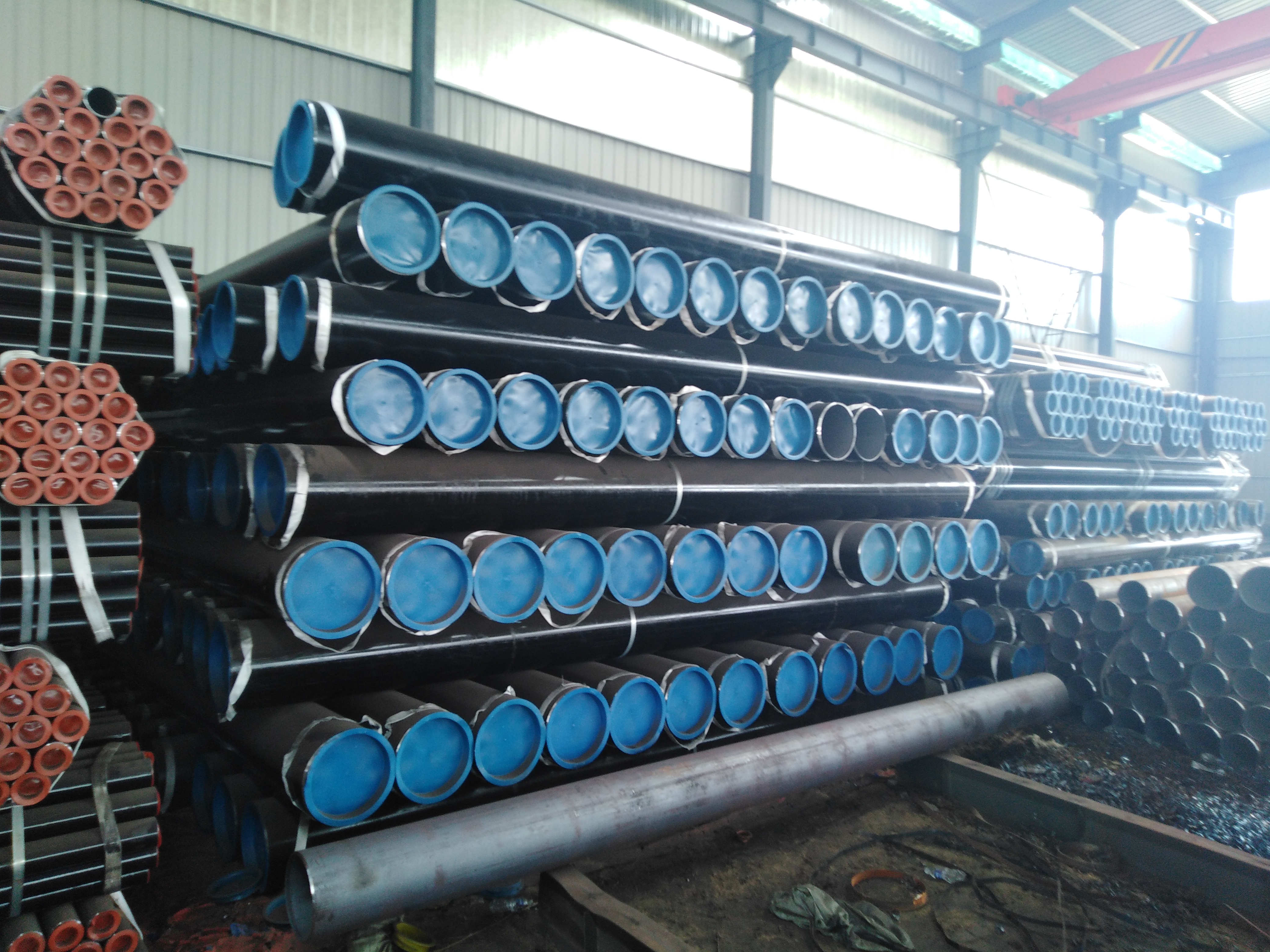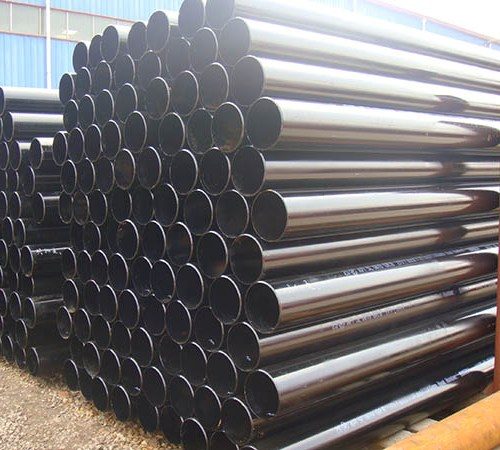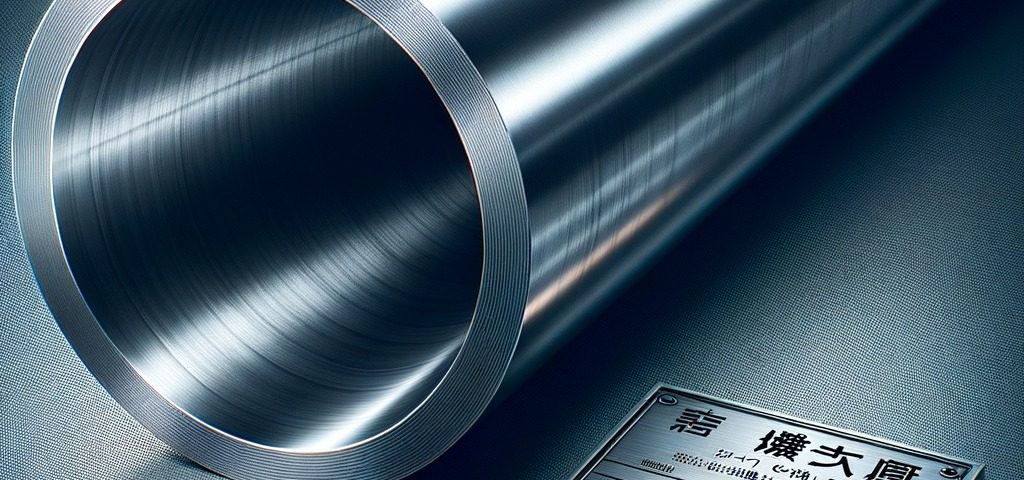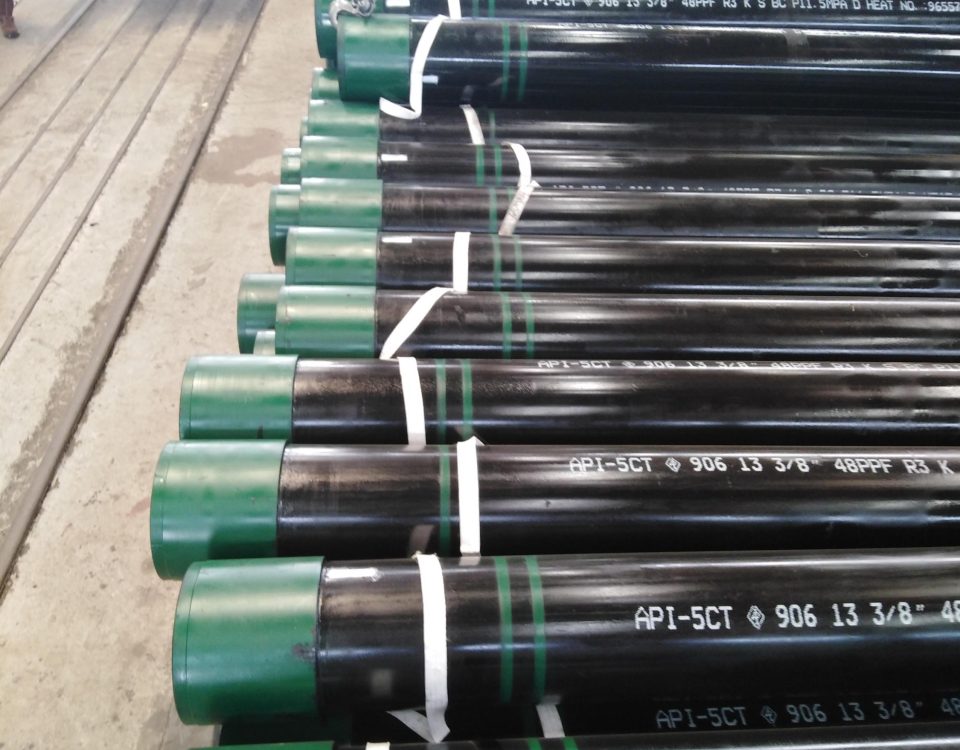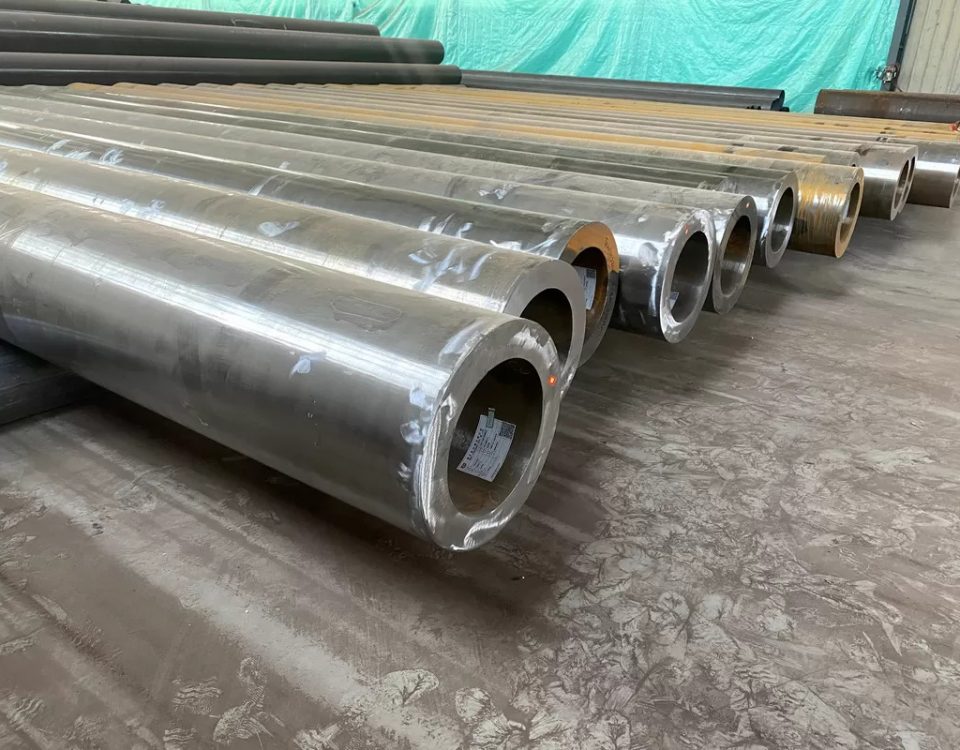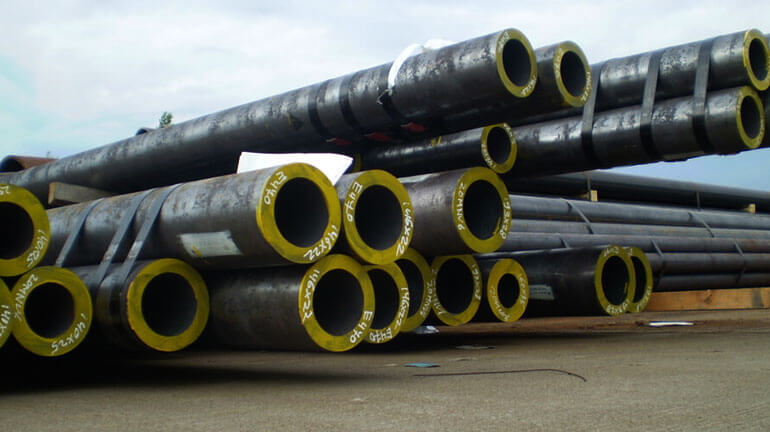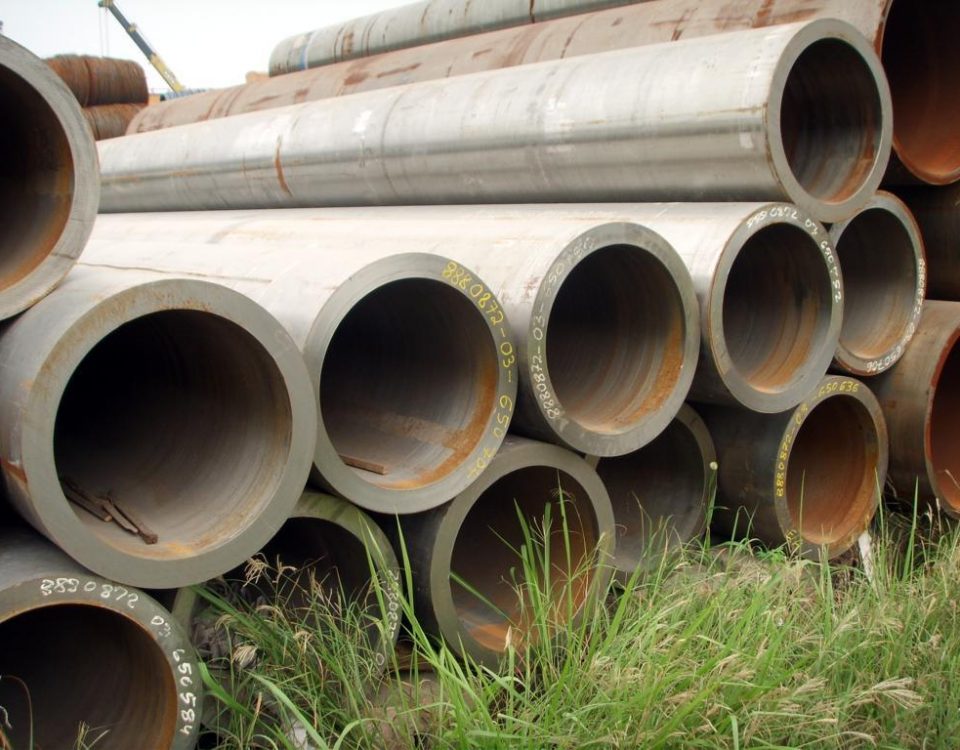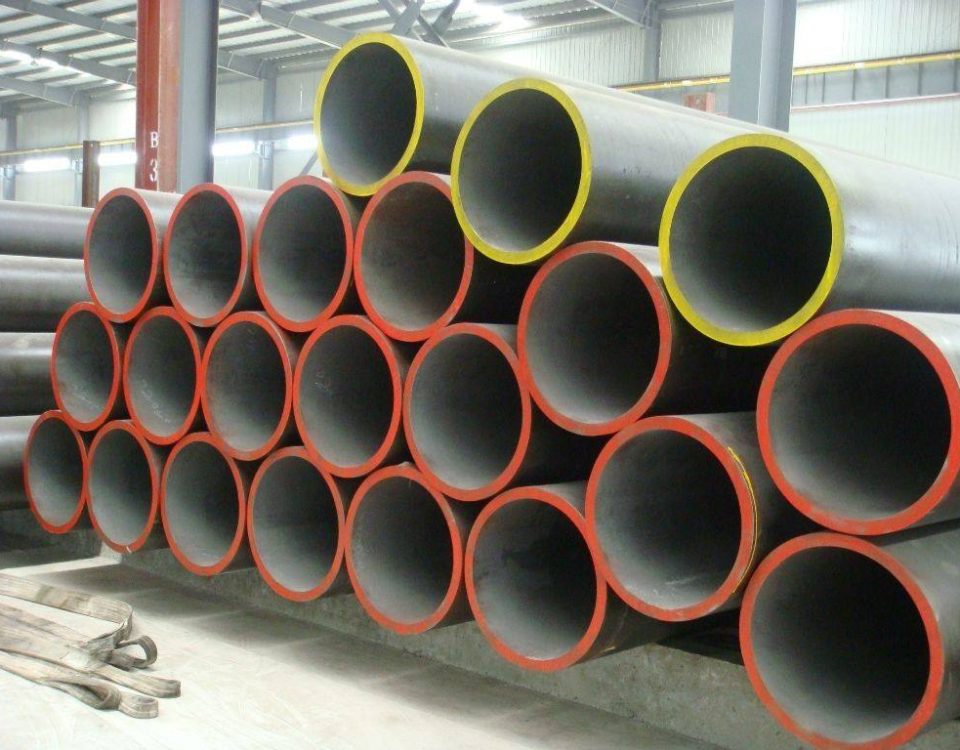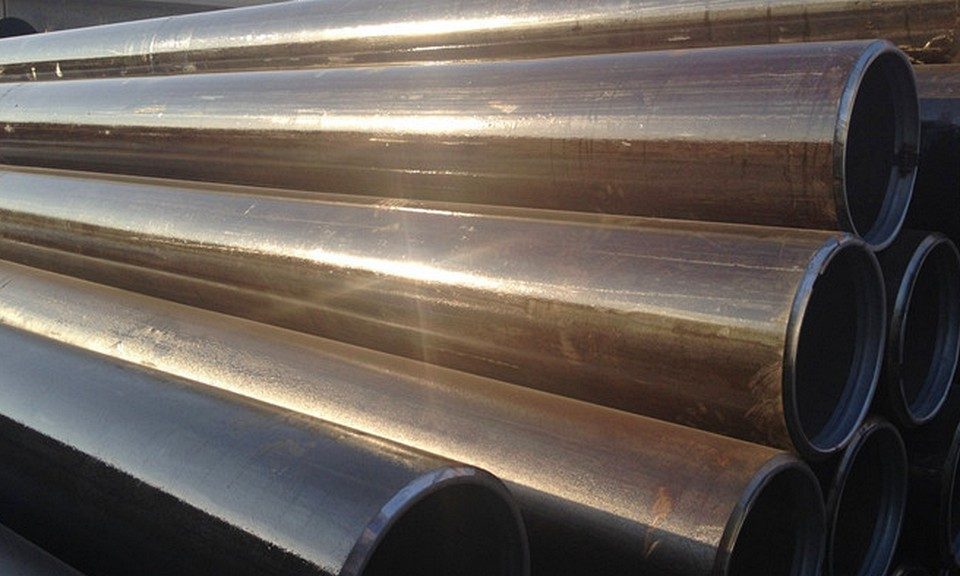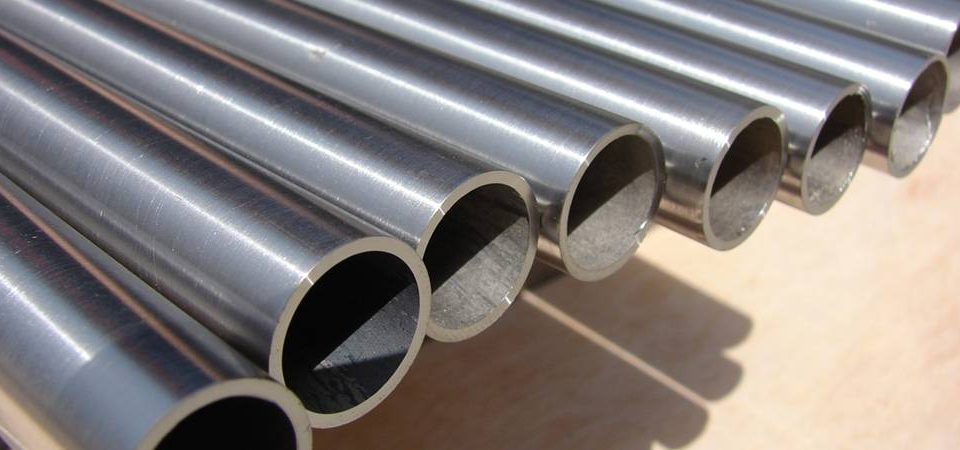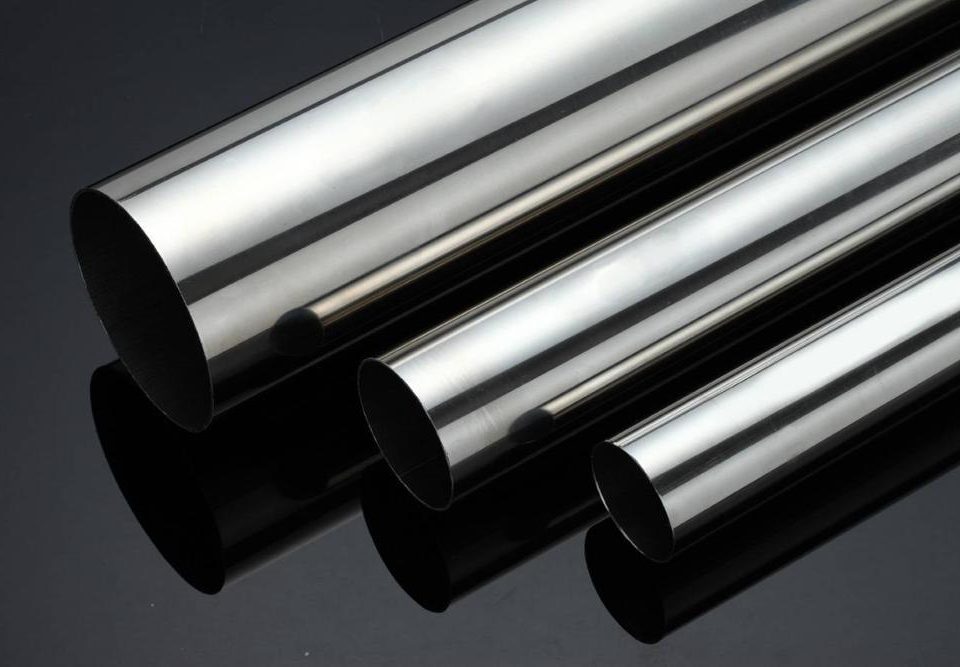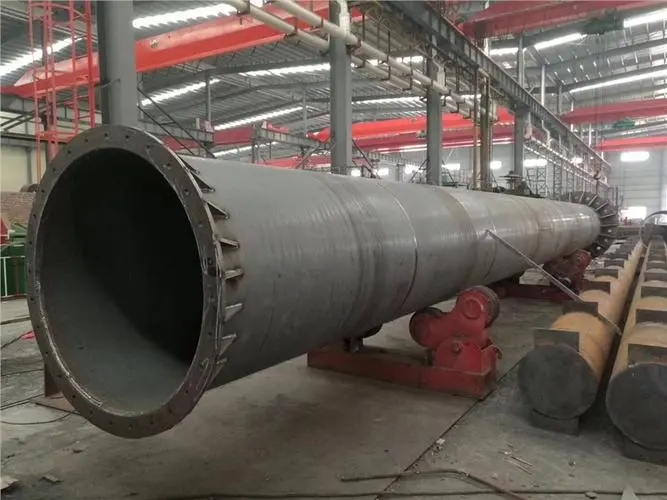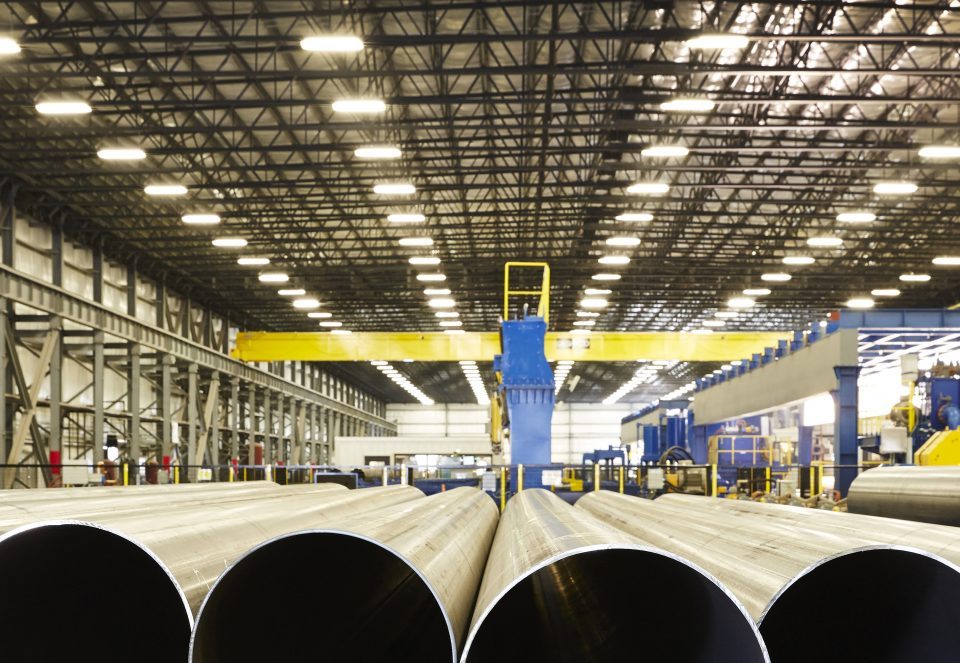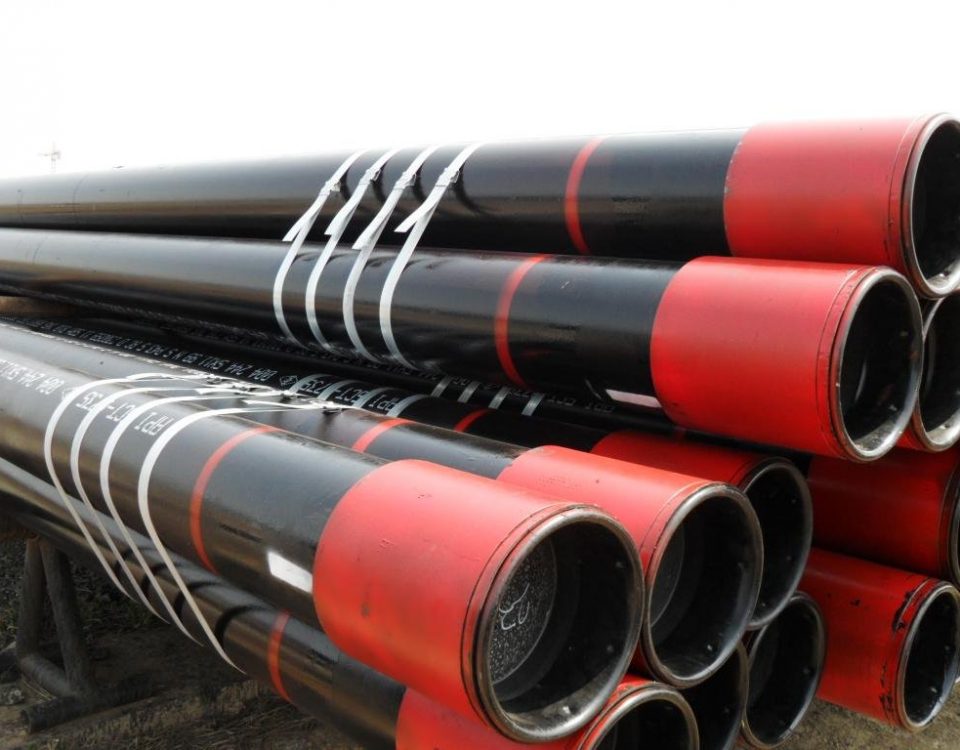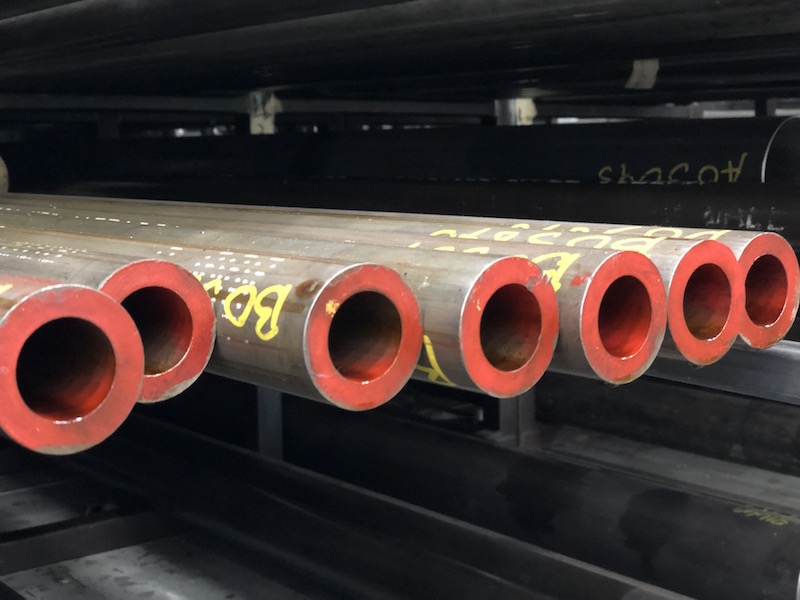
Seamless Steel Pipe Wall Thickness Variation Control Technology
June 21, 2022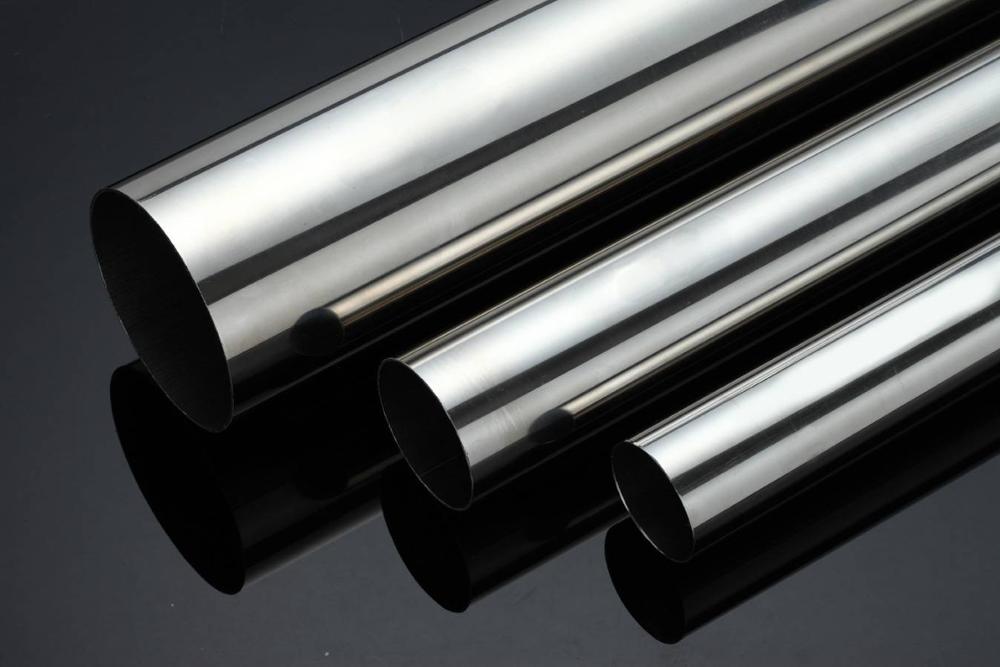
API 1104 Sources of Piping and Related Facilities
June 29, 2022- Knowledge of oil casing
- Basic knowledge
Oil casing is a large-diameter pipe that acts to fix the wall or bore of oil and gas oil wells.
The casing is inserted into the wellbore and fixed with cement to prevent the wellbore from separating the rock formation and the wellbore from collapse, and to ensure the circulating flow of drilling mud to facilitate drilling and exploitation. Different types of casings are used in oil production: Surface oil casing – protects the well from contamination by shallow water and shallow gas layers, – supports wellhead equipment and maintains the weight of other layers of casing.
Technical Oil Casing – Separating pressure at different levels for proper flow of drilling fluid and protecting production casing. – In order to install anti-burst devices, leak-proof devices and tail pipes in the well.
Reservoir Oil Casing – Leads oil and gas from subsurface reservoirs. – Used to protect drilling, layer drilling mud.
When oil casing is produced, the outer diameter is usually 114.3 mm to 508 mm.
- What is oil pipeline pipe
Oil pipelines (also known as pipelines and pipelines) are composed of oil pipes and their accessories, and are equipped with corresponding oil pump units according to the needs of the process flow, designed and installed into a complete pipeline system to complete the oil handling and transfer. Task.
The oil pipeline system, that is, the pipeline system used to transport oil and petroleum products, is mainly composed of oil pipelines, oil transmission stations and other auxiliary related equipment. Compared with railway and road oil transportation, which are both land transportation methods, pipeline oil transportation has the characteristics of large transportation volume, good airtightness, low cost and high safety factor. The pipes of oil pipelines are generally steel pipes, which are connected with long-distance pipelines by connecting devices such as welding and flanges, and valves are used for opening and closing control and flow regulation.
Oil pipelines mainly include isothermal transportation, heating transportation and sequential transportation. Corrosion of pipelines and how to prevent corrosion is one of the important links in pipeline maintenance.
At present, oil pipelines have become one of the main transportation tools for oil, and they still have considerable development potential in the future.
two. Basic knowledge of seamless steel pipes
Seamless steel pipe is a long strip of steel with a hollow section and no joints around it.
The steel pipe has a hollow section and is widely used as a pipeline for transporting fluids, such as pipelines for transporting oil, natural gas, gas, water and certain solid materials. Compared with solid steel such as round steel, steel pipe is lighter in weight when the bending and torsional strength is the same. and steel scaffolding used in building construction.
Making ring parts with steel pipes can improve the utilization rate of materials, simplify the manufacturing process, save materials and processing time, such as rolling bearing rings, jack sets, etc., which have been widely used in steel pipe manufacturing. Steel pipe is also an indispensable material for various conventional weapons. Gun barrels, barrels, etc. must be made of steel pipes. Steel pipes can be divided into round pipes and special-shaped pipes according to the shape of the cross-sectional area. Since the area of the circle is the largest under the condition of equal perimeter, more fluid can be transported with a circular tube. In addition, when the ring section is subjected to internal or external radial pressure, the force is relatively uniform. Therefore, most steel pipes are round pipes.
However, round pipes also have certain limitations. For example, under the condition of plane bending, round pipes are not as strong as square and rectangular pipes. Some agricultural machinery skeletons, steel and wood furniture, etc., are commonly used. Special-shaped steel pipes with other cross-sectional shapes are also required according to different purposes.
All kinds of steel pipe standards and uses:
- Structural seamless steel pipes (GB/T8162-1999) are seamless steel pipes used for general structures and mechanical structures.
- Seamless steel pipe for fluid transportation (GB/T8163-1999) is a general seamless steel pipe used to transport water, oil, gas and other fluids.
- Seamless steel pipes for low and medium pressure boilers (GB3087-1999) are used to manufacture various structures of low and medium pressure boiler superheated steam pipes, boiling water pipes and superheated steam pipes, large smoke pipes, small smoke pipes and arch bricks for locomotive boilers Hot-rolled and cold-drawn (rolled) seamless steel pipes of high-quality carbon structural steel for pipes.
- High-pressure boiler seamless steel pipe (GB5310-1995) is a high-quality carbon steel, alloy steel and stainless heat-resistant seamless steel pipe used for the heating surface of water-tube boilers with high pressure and above.
- High-pressure seamless steel pipe for fertilizer equipment (GB6479-2000) is a high-quality carbon structural steel and alloy steel seamless steel pipe suitable for chemical equipment and pipelines with a working temperature of -40~400℃ and a working pressure of 10~30Ma.
- Seamless steel pipes for petroleum cracking (GB9948-88) are seamless steel pipes for furnace tubes, heat exchangers and pipelines in petroleum refineries.
- The steel pipe for geological drilling (YB235-70) is a steel pipe used by the geological department for core drilling. It can be divided into drill pipe, drill collar, core pipe, casing and sedimentation pipe according to the purpose.
- Seamless steel pipe for diamond core drilling (GB3423-82) is a seamless steel pipe for drill pipe, core pipe and casing for diamond core drilling.
- Oil drilling pipe (YB528-65) is a seamless steel pipe that is thickened internally or externally at both ends of oil drilling. The steel pipe is divided into two types: threading and non-threading. The threading pipe is connected with the joint, and the non-threading pipe is connected with the tool joint by the method of butt welding.
- The carbon steel seamless steel pipe for ships (GB5213-85) is a carbon steel seamless steel pipe for the manufacture of Class I pressure-resistant piping systems, Class II pressure-resistant piping systems, boilers and superheaters. The working temperature of the carbon steel seamless steel pipe wall does not exceed 450 ℃, and the working temperature of the alloy steel seamless steel pipe wall exceeds 450 ℃.
- Seamless steel pipes for automobile axle casings (GB3088-82) are high-quality carbon structural steel and alloy structural steel hot-rolled seamless pipes for manufacturing automobile axle casings and axle casings of drive axles.
- High-pressure oil pipe for diesel engine (GB3093-2002) is a cold-drawn seamless steel pipe for manufacturing high-pressure pipe of diesel engine injection system.
- Precision inner diameter seamless steel pipe for hydraulic and pneumatic cylinders (GB8713-88) is a cold-drawn or cold-rolled precision seamless steel pipe with precise inner diameter for manufacturing hydraulic and pneumatic cylinders.
- Cold-drawn or cold-rolled precision seamless steel pipe (GB3639-2000) is a cold-drawn or cold-rolled precision seamless steel pipe with high dimensional accuracy and good surface finish for mechanical structures and hydraulic equipment. The use of precision seamless steel pipes to manufacture mechanical structures or hydraulic equipment can greatly save machining hours, improve material utilization, and help improve product quality.
- Structural stainless steel seamless steel pipe (GB/T14975-2002) is a hot-rolled ( Extrusion, expansion) and cold drawn (rolled) seamless steel pipes.
- Stainless steel seamless steel pipe for fluid transportation (GB/T14976-2002) is a hot-rolled (extruded, expanded) and cold-drawn (rolled) seamless steel pipe made of stainless steel for fluid transportation.
- Special-shaped seamless steel pipe is a general term for seamless steel pipes with other cross-sectional shapes other than round pipes. According to the shape and size of the steel pipe section, it can be divided into equal-wall thickness special-shaped seamless steel pipe (code D), unequal wall thickness special-shaped seamless steel pipe (code BD), variable diameter special-shaped seamless steel pipe (code BJ). Shaped seamless steel pipes are widely used in various structural parts, tools and mechanical parts. Compared with the round tube, the special-shaped tube generally has a larger moment of inertia and section modulus, and has a larger bending and torsion resistance, which can greatly reduce the structural weight and save steel.
- Knowledge about steel pipes
- Overview of steel pipes
The development of steel pipe production technology began with the rise of bicycle manufacturing. The development of oil in the early 19th century, the manufacture of ships, boilers, and aircraft during the two world wars, the manufacture of thermal power boilers after World War II, the development of the chemical industry, and the drilling, production and transportation of oil and natural gas have all been strongly promoted. The development of the steel pipe industry in terms of variety, output and quality. Steel pipes are not only used for conveying fluids and powdered solids, exchanging thermal energy, making machine parts and containers, but also an economical steel. Using steel pipes to manufacture structural grids, pillars and mechanical supports of buildings [1] can reduce weight, save 20-40% of metal, and can realize factory mechanized construction. Using steel pipes to manufacture highway bridges can not only save steel and simplify construction, but also greatly reduce the area of protective coating, saving investment and maintenance costs. Therefore, any other type of steel can not completely replace steel pipes, but steel pipes can replace some profiles and bars. Steel pipes have a great relationship with the development of the national economy and the improvement of human life quality, far better than other steels. From people’s daily utensils, furniture, water supply and drainage, gas supply, ventilation and heating facilities to the manufacture of various agricultural machinery and equipment, the development of underground resources, the guns, bullets, missiles, rockets used in national defense and aerospace are inseparable from steel pipes. Just because steel pipes are inseparable from human life and production activities, the production technology of steel pipe industry not only develops rapidly, but also brings forth new ones. Steel pipe production occupies an irreplaceable position in the steel industry.
- Classification by production method
Steel Pipe
(1) The manufacturing process of seamless steel pipes can be divided into basic categories: hot rolling (extrusion), cold rolling (drawing), and hot expanded steel pipes.
(2) Welded pipes can be divided into: straight seam welded steel pipes, submerged arc welded steel pipes, coil butt welded steel pipes, and welded pipe thermally expanded steel pipes according to the manufacturing process.
(3) According to the shape of the steel pipe, it can be divided into square pipe, rectangular pipe, octagonal, hexagonal, D-shaped, pentagonal and other special-shaped steel pipes. Complex section steel pipe, double concave steel pipe, five-petal plum-shaped steel pipe, conical steel pipe, corrugated steel pipe, melon-shaped steel pipe, double convex steel pipe, etc.
(4) Classification by use – steel pipes for pipelines, steel pipes for thermal equipment, steel pipes for machinery industry, steel pipes for petroleum, geological drilling, container steel pipes, steel pipes for chemical industry, special-purpose steel pipes, other
chemical composition test
(1) GB3087-82 “Seamless Steel Tubes for Low and Medium Pressure Boilers” stipulates. The chemical composition test method is in accordance with the relevant parts of GB222-84 and GB223 “Chemical Analysis Methods of Iron and Steel and Alloys”.
(2) GB5310-95 “Seamless Steel Tubes for High Pressure Boilers” stipulates. The chemical composition test method is in accordance with the relevant parts of GB222-84 and “Methods for Chemical Analysis of Iron and Steel and Alloys” and GB223 “Methods for Chemical Analysis of Iron and Steel and Alloys”.
- What are the general classifications of pipes
Pipes for mechanical industry.
Such as aviation structural pipes (round pipes, elliptical pipes, flat elliptical pipes), automobile semi-axle pipes, axle pipes, automobile tractor structural pipes, tractor oil cooler pipes, agricultural machinery square pipes and rectangular pipes, transformer pipes and bearings. tube etc. Pipes for petroleum geological drilling.
Such as: oil drill pipe, oil drill pipe (kelly and hexagonal drill pipe), drill pipe, oil tubing, oil casing and various pipe joints, geological drilling pipe (core pipe, casing, active drill pipe, drill pipe) , press hoop and pin joints, etc.). Pipes for chemical industry.
Such as: oil cracking pipes, chemical equipment heat exchangers and pipes, stainless acid-resistant pipes, high-pressure pipes for fertilizers, and pipes for transporting chemical media, etc. Other departments use pipes.
Such as: tubes for containers (tubes for high-pressure gas cylinders and tubes for general containers), tubes for instrumentation, tubes for watch cases, injection needles and tubes for medical devices, etc. According to the connection, the steel pipe can be divided into: plain pipe (pipe end without thread) and wire pipe (pipe end with thread).
The wire tube is further divided into: ordinary wire tube and tube end thickened wire tube. Thickened wire tube can also be divided into: external thickening (with external thread), internal thickening (with internal thread) and internal and external thickening (with internal and external thread) and other threading tubes.
According to the thread type, the threading pipe can also be divided into: ordinary cylindrical or conical thread and special threading and other threading pipes.